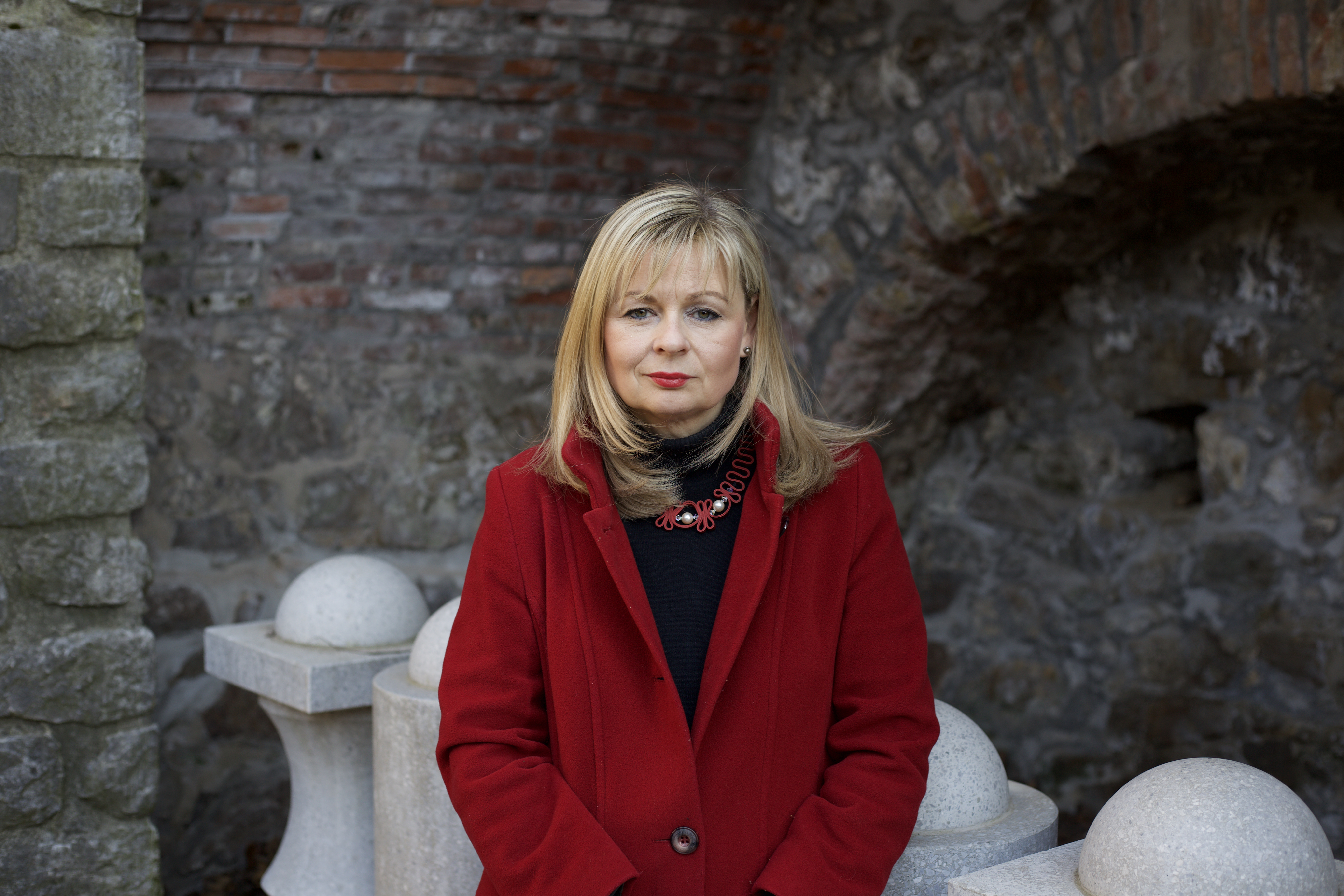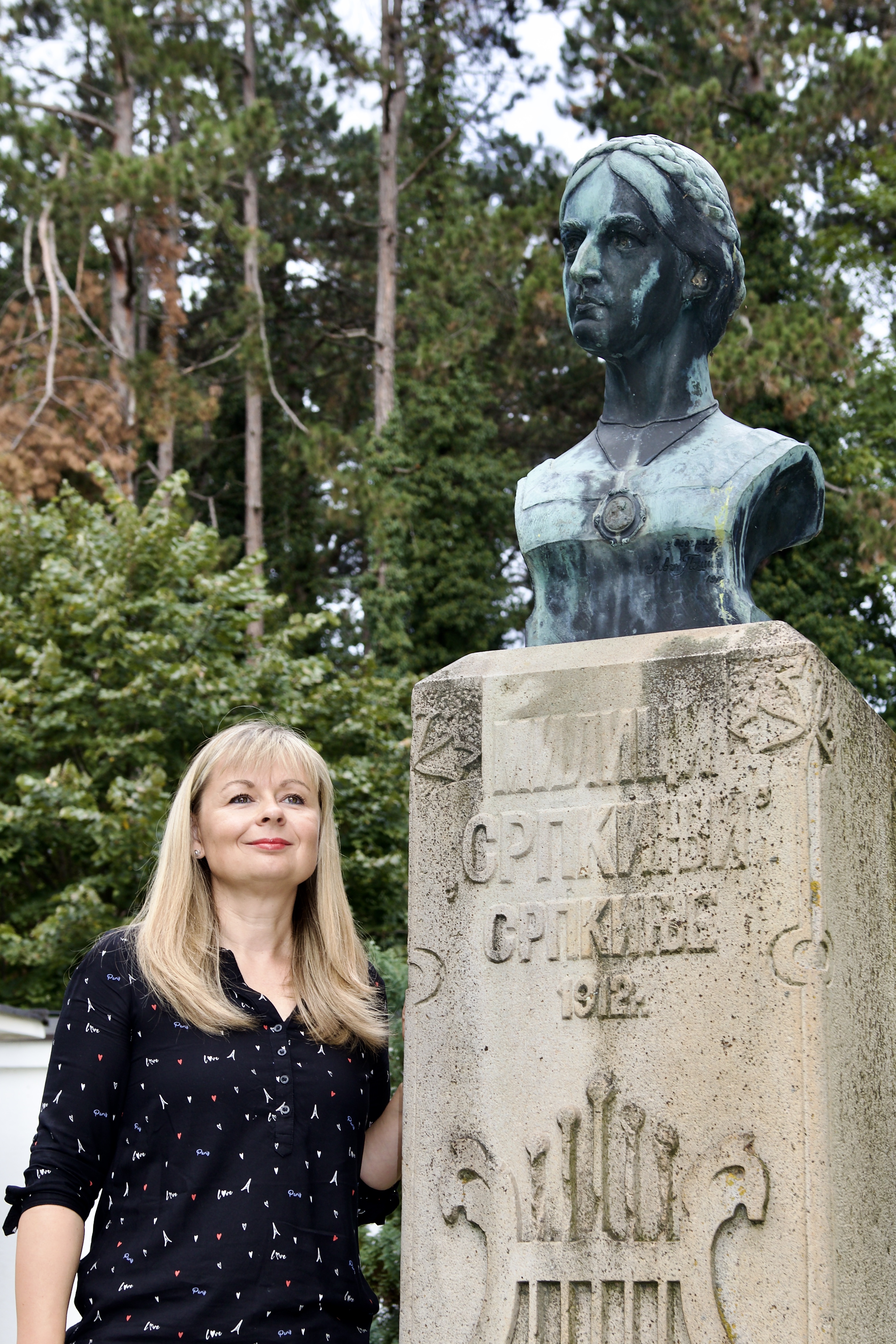
Prof. Katja Mihurko Poniž
Katja Mihurko Poniž is a full professor at the Faculty of Humanities, University of Nova Gorica. She teaches Slovenian literature and gender studies. Her research is focused on the representations of femininity and masculinity in the field of literature and literary studies with an emphasis on Slovene literature. She has also published articles on the women’s movement before the Second World War and has integrated digital humanities approaches into literary research. She is the head of the Research Centre for Humanities at the University of Nova Gorica. Katja Mihurko Poniž is the author of six scientific monographs: Drzno drugačna: Zofka Kveder in podobe ženskosti [Daringly Different: Zofka Kveder and Representations of Womanhood], Labirinti ljubezni v slovenski književnosti od romantike do II. svetovne vojne [Labyrinths of Love in Slovenian Literature from Romanticism until WW2], Evine hčere konstruiranje ženskosti v slovenskem javnem diskurzu 1848-1902, [Eve's Daughters: The Construction of Womanhood in Slovenian Public Discourse 1848–1902], Zapisano z njenim peresom: prelomi zgodnjih slovenskih književnic s paradigmo nacionalne literature [Written with Her Pen: Slovene Women Writers Breaking with the Paradigm of National Literature], Literarna ustvarjalka v očeh druge_ga [A Literary Creator in the Eyes of the Other Author: Studies on Reception, Literary Contacts and Biographical Discourse], Od lastnega glasu do lastne sobe [From a Voice of One’s Own to the Room of One’s Own]. She is the editor of a critical edition of the Collected Works of Zofka Kveder (five volumes have been published so far). Since last year, she has been the principal investigator in the project Transformations of Intimacy in the Literary Discourse of Slovenian “Moderna”.
The international summer school INTIMACY IN WOMEN'S WRITING AND READING was held in Ljubljana at the end of August with great success. You were the initiator and director of this event in which more than 20 students and more than 10 teachers took part during one week of work and research. Where did the idea for this topic stem from?
In 2021, I attended a workshop on intimacy at the University of Gothenburg and discovered that intimacy was a concept I had touched on repeatedly in my research as a scholar in gender and literary studies, but also a concept in whose theoretical and methodological discourse I had not engaged intensively. After studying these theories in depth, I applied for the project Transformations of Intimacy in the Literary Discourse of Slovenian “Moderna”, and it was approved and has been funded since November 2021 by the Slovenian and Czech Research Agencies. A student summer school seemed to be the perfect place to talk about this topic in different groups. At the same time, a summer school as part of the CEEPUS Women Writers in History network was being planned. I was very happy when my colleagues in the network agreed that this would be the topic of our first summer school.
You took part in a number of international projects – two COST actions, one on women’s writing and another on distant reading, taught as part of doctoral studies at the University of Belgrade within the Patterns project on women’s periodicals – you participated in the Erasmus exchange programme at various universities and formed a CEEPUS network entitled “Women Writers in History” in 2019. It is a lot of work, in terms of both research and organization, not to mention the difficult year 2020 and the COVID-19 pandemic. How do you cope with it? What are the aims and gains of CEEPUS and other projects?
It is true that being involved in many projects is exhausting, but working in a group enriches me and inspires me immensely. Research is not just a job, it is a constant opening of new horizons. In the field of researching women writers, as well as in the field of digital humanities, researchers are breaking new ground and often have to prove themselves in traditional, even conservative, environments. They are not just my colleagues, they are my role models. Of course, a lot also depends on the environment in which I work. Now that my son is a student, I am not burdened with childcare anymore, which is a challenge for many younger researchers and not always easy to manage. I am sure that without all these projects, without the constant interaction with colleagues working on similar topics, I would not have grown, would not have developed as a scholar, and I have certainly learned a lot about life, not just about literature from them.
Another recent development is the Women Writers Route, a project initiated by the Forum of Slavic Cultures, which has become one of around 50 routes of the European Councel. You were in it from the start. Last year, a book on women writers included in the route was published, and you were one of the editors. How would you describe the initial idea and what are your plans regarding it?
All of us who work on women writers know that, with perhaps a few exceptions – that is, the so-called canonised authors – their work is neither known nor appreciated enough. Because of this, girls and women do not know their own history, they do not know how brave and also how successful their predecessors were. The Women Writers Route allows us to learn about their work differently from how we are used to learning literature in school. I think it is very important to make women writers visible in the topography of cities – with monuments and other memorials that attract our attention. I think that the certificate issued by the Council of Europe is one of the keys that can open the doors that may have been closed, because in many places tourism officials do not know how interesting women writers can be to visitors. On my way to Belgrade, where we are speaking today, to my great delight, I stopped in Slavonski Brod, where Ivana Brlić-Mažuranić is "visible" not only on the central square thanks to her monument, but also in other parts of the city. In the restaurant where I had lunch, a whole wall is dedicated to her and her works. I was really impressed by that. And on the other hand, her birthplace, Ogulin, with its museum, is certainly a great example of combining literature and cultural tourism.

You teach at the University of Nova Gorica. It is a recently founded university on the border between Slovenia and Italy. Is there any kind of symbolism in its location?
Yes, it is a place of interculturality, a place where people have fought for their language during the fascist regime, and this is felt at the university and in the region. On the other hand, it is a place where a special, strong wind often blows, the so-called bora (bura in South Slavic languages) and I would like to say that it carries away everything that is not solid, everything that is not firmly attached to the ground. I think that those of us who form the core of the University have been rooted for many years (in my case, for about 15 years) in this special landscape at the crossroads of Slovenian, Italian and Friulian cultures, but at the same time, a legacy of the Habsburg Monarchy, whose aristocrats considered Gorizia their Nice, is still visible.
From that cultural intersection, in the twentieth century, many women left in search for financial means in order to improve the lives of their families. Their stories are difficult but extraordinarily interesting for historians. Who were the Alexandrian women and how is the memory of them kept?
The Alexandrian women (Aleksandrinke in Slovenian) were women who went to work in Egypt after the construction of the Suez Canal. They performed various domestic works in Alexandria and Cairo. They were maids, cooks, nannies, nursemaids, "dames de compagnie". They often went abroad to earn a dowry, but also to help with the family budget. Particularly during fascism, when farmers were hit by high taxes, they were instrumental in ensuring that their land would not be sold off to the fascists. Research into their lives began only after 1990, and today there are numerous scholarly studies written about them, documentary films made, many literary works written, and a very important museum, which is run by members of the Society for the Preservation of the Cultural Heritage of Alexandrian Women.
Your permanent research interest is Zofka Kveder. What is her place in the history of Slovene literature and how is she “daringly different”? What does she represent among women writers and within their transnational history?
Zofka Kveder is undoubtedly an author who has a place in Slovenian literary history in every respect, though not quite like her contemporary Ivan Cankar. However, she is certainly more present in international research as she is also being discovered by scholars who study the women writers of Central European modernism. Her boldness lies primarily in the fact that she crossed both the boundaries of socially defined gender roles and the boundaries between the cultures of her time. She introduced many new themes into Slovenian literature, especially very complex female characters and different representations of femininity. She was also an important mediator between Czech, Croatian, Serbian and German literatures. She had an extremely extensive network of friends and collaborators, including important intellectuals and feminists of her time.
What is the importance of women writers for Slovene literary modernism? How does the topic of intimacy in their works change the view on the “universal”, that is, male, literary history? What about the regional and European literary scene?
Slovenian modernist women writers enriched Slovenian literature with a different worldview. Slovenian male authors tried to empathise with women's feelings and thinking, but this was rare, and they usually projected their own views, often traumas, onto female characters. Last but not least, the female authors also took up topics that were uninteresting for male authors: female friendship, lesbian relationships (without negative images of the so-called lesbian evil), the female artistic creative process, multi-layered images of motherhood without Catholic idealisation and moralization, female sexual desire, etc.
Is that breakthrough spirit still present in contemporary Slovenian women’s writing?
Contemporary women authors write excellent literature, and although they are probably not translated as much as men (as the great novelist Suzana Tratnik said), many of their works are translated, so I recommend reading them.
What are your plans for the next period? A year or two ahead? Starting this year, you are a member of the Editorial Board of Knjiženstvo – do you have any immediate ideas or suggestions about the journal's future?
I look forward to working as a member of the editorial board of Knjiženstvo, a journal I hold in high esteem. I believe that it should continue to focus on women writers from the Slavic world, and I hope that it will soon be included in the SCOPUS database.
